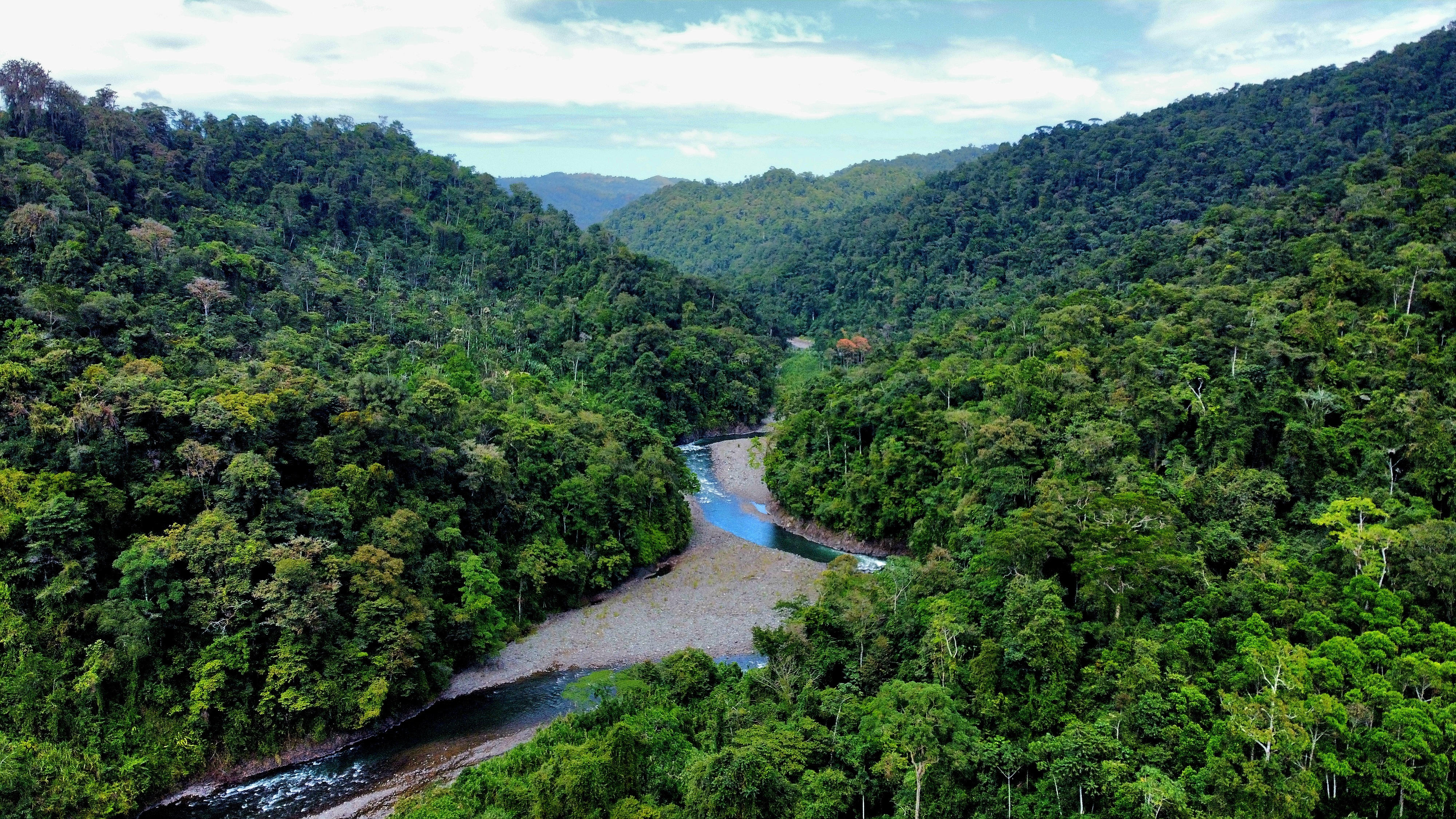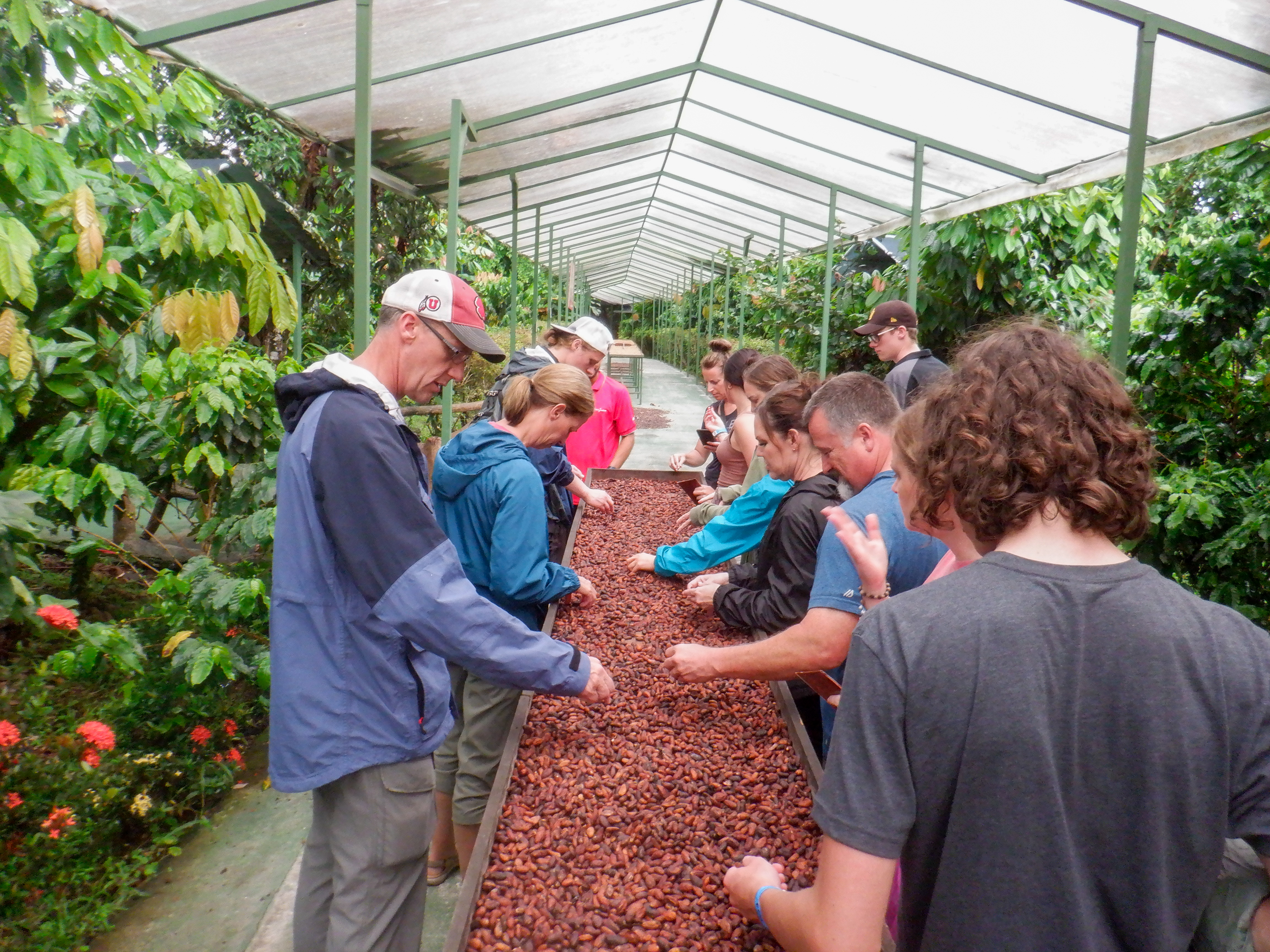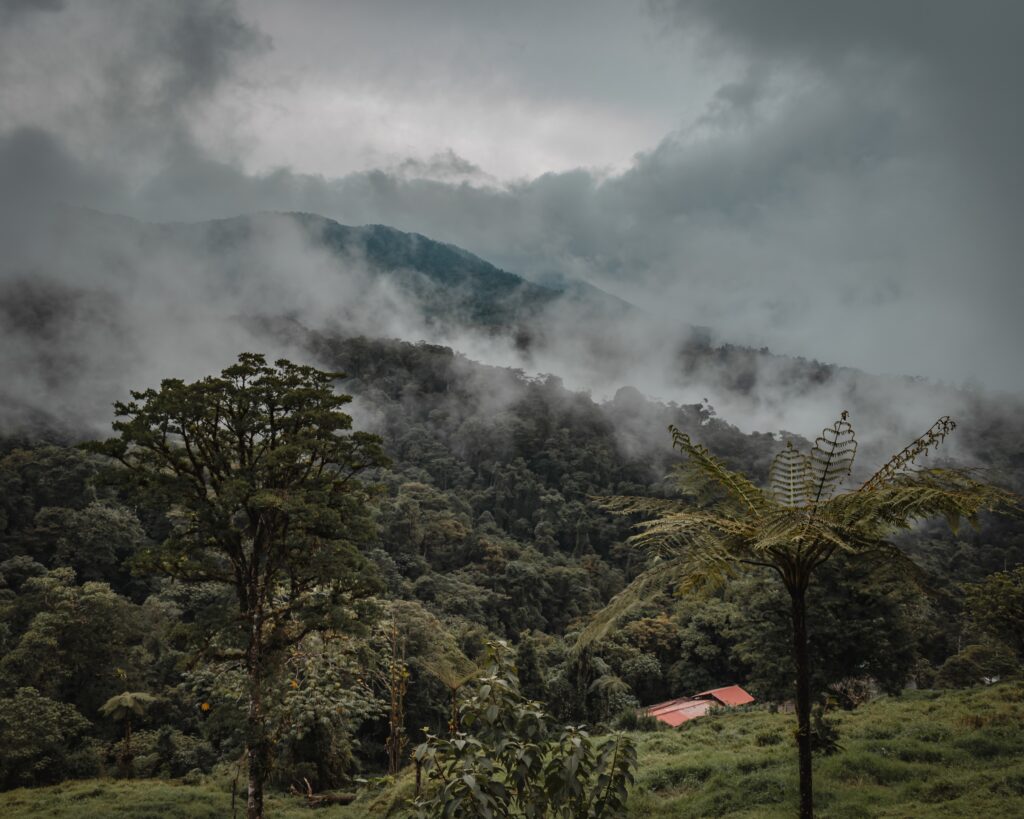
Which location is right for you?
Rainforests and cloud forests are both types of tropical forests, and a cloud forest is a type of rainforest. Both are teeming with lush vegetation, unique wildlife, high rainfall and an ethereal atmosphere, these ecosystems share similarities. Besides one being a compound word – and the other being two words, they also possess distinctive characteristics that set them apart.
Climate, Altitude and Moisture Levels
The key distinction between rainforests and cloud forests lies in their climates, altitude, and moisture levels. While both rain forests and cloud forests receive high amounts of rainfall, the source of this moisture is different.
Rainforest
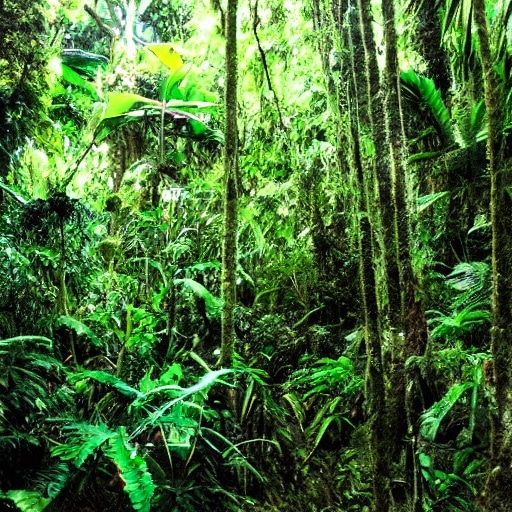
Rainforests are dense forests. They get their name because they receive consistent rainfall throughout the year and enjoy high humidity.
These forests are located at low-altitudes and have relatively stable temperatures year-round. This forms a dense green paradise.
The dominant characteristic of a rainforest is its dense, multi-layered canopy formed by towering trees, which intercept sunlight and create a shaded environment beneath that blocks sunlight from reaching the forest floor.
This abundant sunlight in the upper layers allows for a diverse range of plant species to thrive, including towering emergent trees, epiphytes, lianas, and countless other flora.
Beneath the canopy lies the understory, consisting of smaller trees, shrubs, and various plants adapted to lower light levels.
Cloud Forest
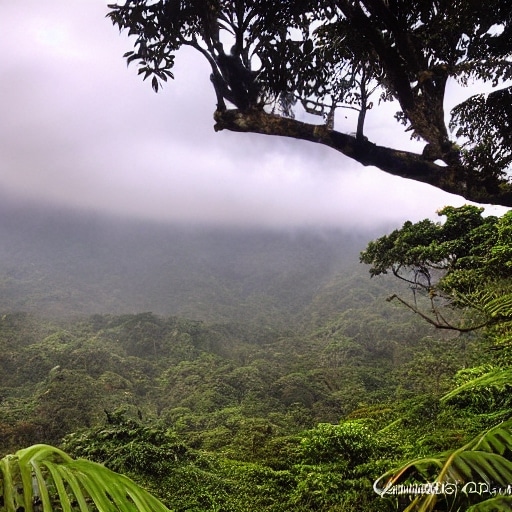
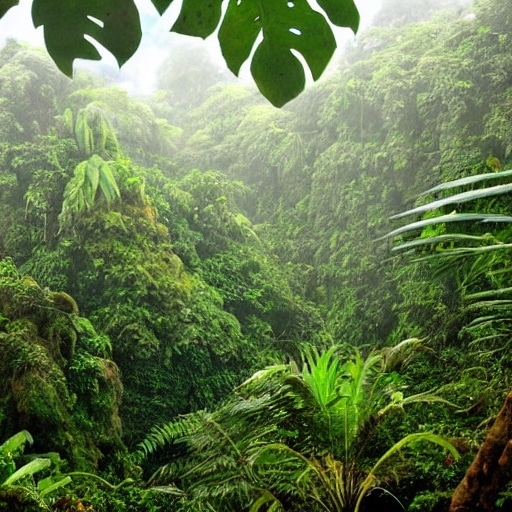
These forests owe their name to the constant presence of clouds or fog. which lends them their unique and mystical ambiance. Cloud forests have a shorter plant stature due to the reduced sunlight caused by the constant cloud cover.
Cloud forests receive most of their moisture from fog, which forms when warm, moist air rises up a mountainous region and cools, forming clouds that then settle over the forest.
As a result experience cooler temperatures and more variation in temperature. They also experience a drier period known as the “cloud drip” during the cooler months when the cloud cover is reduced.
But they still maintain a high humidity. The moisture in the air from the perpetual mist or cloud cover condenses on the trees and plants, providing them with water during these dry seasons.
The vegetation is often characterized by mosses, ferns, orchids, and smaller trees. The trees in cloud forests adapt to the higher moisture levels and low-light conditions, often developing large leaves and spreading branches to maximize their access to limited sunlight.
Biodiversity
Both rainforests and cloud forests boast incredible biodiversity, hosting a plethora of plant and animal species.
Rainforest

Rain forests are the epitome of biodiversity and tend to be home to more species of mammals, reptiles, and amphibians. The dense vegetation and ample food sources in the rich ecosystem of rainforests supports an intricate web of life.
This includes numerous exotic creatures, including jaguars, toucans, monkeys, and a vast variety of colorful birds, reptiles, and insects.
Hiking through the rainforest trails or embarking on a thrilling canopy tour offers an opportunity to immerse oneself in the rich tapestry of life that thrives within.
Cloud Forest

While cloud forests are known for their diverse bird populations and unique plant life. Many species found in cloud forests are endemic, meaning they are found only in that particular forest.
Here, one can find creatures like the spectacled bear, the resplendent quetzal, the Andean cock-of-the-rock, the elusive olingo, the colorful tree frogs, and various species of hummingbirds.
The dense fog provides moisture and sustenance for a diverse array of amphibians, and insects
Walking through the cloud forest trails, encountering intriguing creatures will add a touch of magic to your journey.
Ecological Threats
Unfortunately, both rain forests and cloud forests are under threat from human activity. Rain forests are being destroyed at an alarming rate due to logging, mining, and agriculture. Cloud forests are also under threat from logging and agriculture, as well as from climate change.
As temperatures rise, the cloud layer that provides moisture to the forest can shift or disappear, leading to drought and the loss of plant and animal species. Both of these forests are incredibly important ecosystems that play a crucial role in our planet’s health, and it’s important that we take action to protect them.
Both the rainforests and cloud forests of Costa Rica have become major attractions for ecotourism, drawing visitors from around the world who seek to witness the country’s natural wonders. Numerous national parks and reserves, such as Manuel Antonio National Park, Corcovado National Park, and Monteverde Cloud Forest Reserve, offer guided tours and educational experiences that promote conservation and sustainable practices.
Costa Rica’s commitment to environmental preservation has led to the establishment of protected areas and the promotion of eco-friendly initiatives. Efforts to conserve these precious ecosystems and their inhabitants have resulted in the preservation of biodiversity hotspots and the promotion of responsible tourism.

Costa Rica’s rainforests and cloud forests offer captivating experiences, each with its own distinct charm. Whether you’re exploring the vibrant biodiversity of the rainforests or immersing yourself in the mystical ambiance of the cloud forest it will be a magical experience to add to your time while in Costa Rica.
You can’t go wrong as you include one or both of these amazing ecosystems in your travel to Costa Rica!



